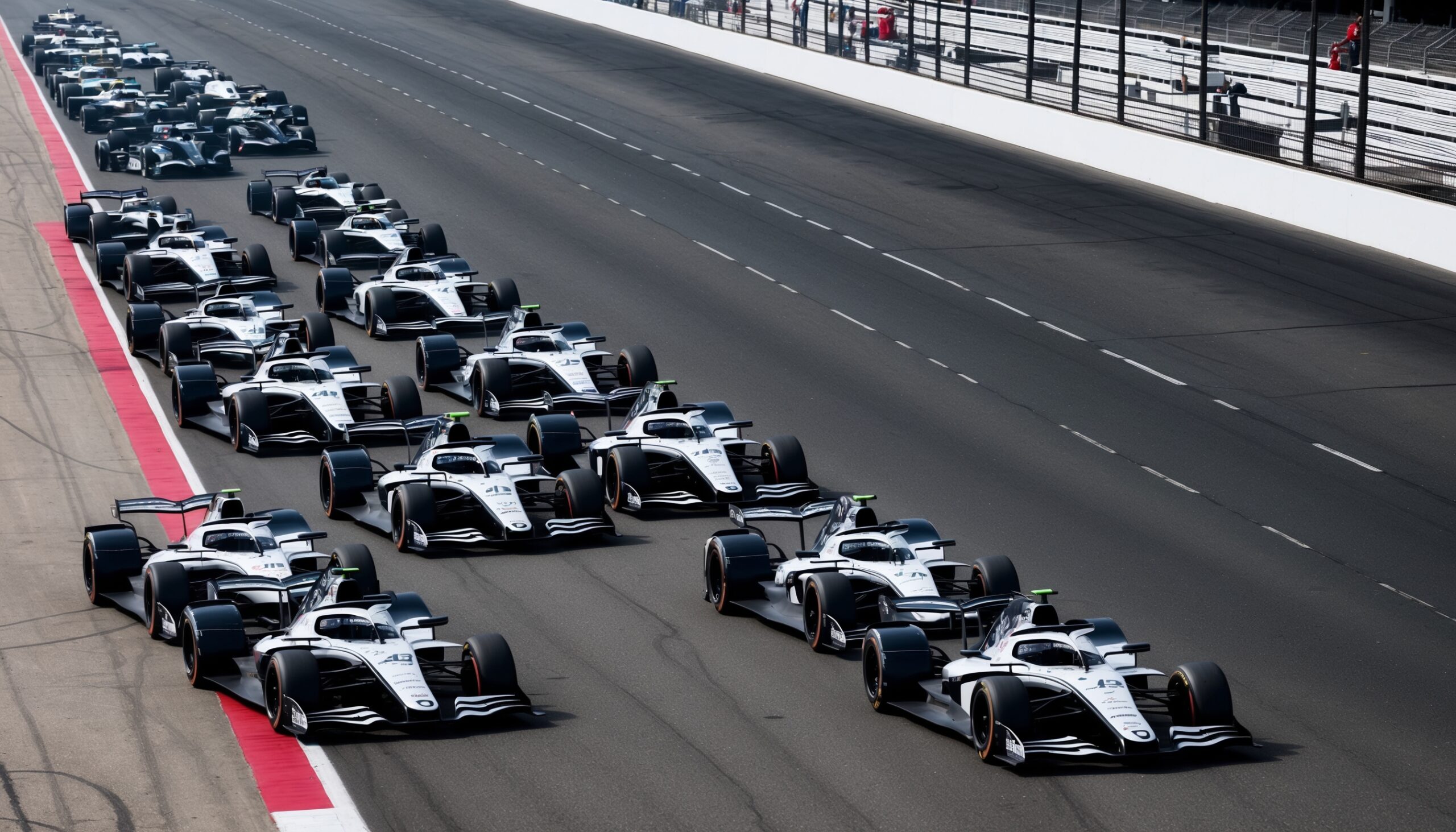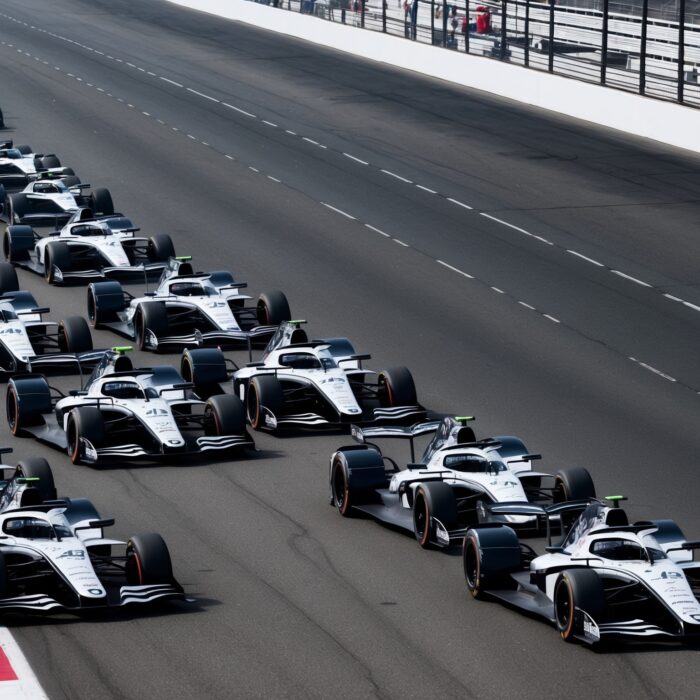Former Williams Chief Defends McLaren F1 Driver Management
In the fast-paced and often tumultuous world of Formula 1, driver management is crucial for a team’s success. As teams strive to find the perfect balance between nurturing talent and achieving immediate results, the spotlight often falls on the decisions made by team principals and management. Recently, the former chief of Williams F1, who has seen both triumphs and challenges in the sport, stepped forward to share insights on the current state of driver management at McLaren. This discussion has sparked interest among fans and experts alike, raising questions about the strategies employed by one of the most storied teams in F1 history.
Understanding the Context
McLaren, a name synonymous with excellence in motorsport, has had its share of ups and downs in recent years. With a rich heritage filled with championship wins and iconic drivers, the team has faced the harsh realities of a highly competitive environment. The former Williams chief, whose tenure at the iconic British team shaped his understanding of driver dynamics, emphasized the importance of long-term vision over short-term gains.
The Philosophy of Driver Development
When discussing McLaren’s approach to driver management, the former Williams chief highlighted the intricate balance between developing young talent and securing experienced drivers. He noted that while the allure of immediate results can be tempting, sustainable success lies in fostering a culture of growth and resilience.
- Long-Term Strategy: The chief emphasized the need for a strategic vision that extends beyond the current season, advocating for a focus on nurturing young drivers who have the potential to become future stars.
- Experience Matters: While young talent is essential, the role of seasoned drivers cannot be underestimated. They provide invaluable insights and stability, especially during challenging times.
- Team Dynamics: The chemistry between drivers is crucial. A harmonious team environment fosters collaboration and can lead to better performance on the track.
McLaren’s Current Driver Line-Up
At the heart of this discussion is McLaren’s current driver line-up. The team has opted for a combination of fresh talent and experienced hands, a strategy that reflects the principles discussed by the former Williams chief. Let’s take a closer look at their drivers and what they bring to the table.
Lando Norris: The Rising Star
Lando Norris has emerged as one of the most promising talents in Formula 1. Since joining McLaren, he has consistently impressed fans and critics alike with his speed, skill, and maturity. His ability to communicate effectively with the team and provide feedback has been invaluable in the development of the car.
Oscar Piastri: The Rookie Sensation
Oscar Piastri’s arrival at McLaren has been highly anticipated. As a former Formula 2 champion, he brings a wealth of potential and a fresh perspective. The former Williams chief noted that integrating a rookie into a seasoned team can be challenging, but it can also yield significant rewards if managed correctly.
The Challenges of Driver Management
Driver management is not without its challenges. The former Williams chief shared his insights on some of the hurdles that teams like McLaren face in navigating the complexities of driver relationships and performance expectations.
Pressure and Expectations
Formula 1 is a high-pressure environment, and both drivers and teams must manage the weight of expectations. The former chief pointed out that this pressure can lead to tension within the team, especially when results do not meet the desired standards.
Balancing Personalities
Every driver has their own personality, and blending these diverse traits can be a delicate task. The former Williams chief emphasized the importance of understanding each driver’s motivations and working styles to create a cohesive unit.
Media and Public Perception
In today’s digital age, media coverage and public opinion can significantly impact a driver’s career. The former chief acknowledged that while the scrutiny can be overwhelming, it’s essential for teams to support their drivers and shield them from unnecessary distractions.
The Role of Communication
Effective communication is key in addressing any potential issues that arise. The former chief highlighted that open lines of communication between drivers and management can help mitigate misunderstandings and foster a positive atmosphere.
Future Prospects for McLaren
Looking ahead, the former Williams chief is optimistic about McLaren’s trajectory. He believes that with the right management strategies, the team can harness its potential and return to the upper echelons of F1. The lessons learned from past experiences can serve as valuable tools for navigating the future.

The Importance of a Strong Team Culture
One of the chief’s key points was the significance of a strong team culture. In an environment where competition is fierce, fostering a sense of unity and purpose can be a game-changer. He elaborated on the core values that McLaren should embrace to ensure long-term success.
- Trust: Developing trust among team members, from drivers to engineers, is paramount. This trust leads to better collaboration and a shared commitment to excellence.
- Innovation: Encouraging a culture of innovation allows teams to push boundaries and explore new possibilities. This is particularly crucial in a sport that thrives on technological advancements.
- Accountability: Holding each other accountable fosters a sense of responsibility, driving individuals to perform at their best.
Learning from History
The former Williams chief reflected on his own experiences in the sport, sharing stories of how past challenges shaped his understanding of driver management. He drew parallels between his time at Williams and the current landscape at McLaren, emphasizing the importance of learning from history to avoid repeating mistakes.
Successes and Failures
Every team has its successes and failures, but it’s how they respond to these experiences that defines their future. The former chief encouraged McLaren to embrace both victories and setbacks as opportunities for growth and development.
Fan Engagement and Community Support
For any successful Formula 1 team, the support of fans is invaluable. The former Williams chief emphasized that engaging with the fan base not only boosts morale but can also provide insights that inform driver management strategies. Understanding what fans appreciate about drivers can help teams shape their public personas effectively.
Building a Brand
McLaren has a legacy that goes beyond just racing; it’s a brand built on innovation, excellence, and a deep connection with fans. The former chief noted that maintaining and enhancing this brand image is a vital aspect of driver management.
Also Read: Why Amazon Trucks Make That Annoying Sound Backing Up
The Road Ahead
As the F1 season progresses, all eyes will be on McLaren and its approach to driver management. With the former Williams chief’s insights in mind, it’s clear that a thoughtful strategy focusing on both immediate and long-term goals could pave the way for the team’s resurgence in the sport.
Also Read: Vauxhall will return to motorsport in 2026 with electric rally series
In the world of Formula 1, where every decision can have far-reaching consequences, the importance of effective driver management cannot be overstated. As McLaren continues to navigate the complexities of the sport, the lessons shared by experienced figures can serve as guiding lights in their quest for success.
Whether you’re a die-hard McLaren fan or simply an enthusiast of the sport, the evolution of driver management at this iconic team is a story worth following. As we all know, in F1, every lap counts, and every decision shapes the future.
Stay tuned to Torque Feed for more insights and updates on the world of motorsport, as we continue to explore the fascinating narratives that unfold on and off the track.












